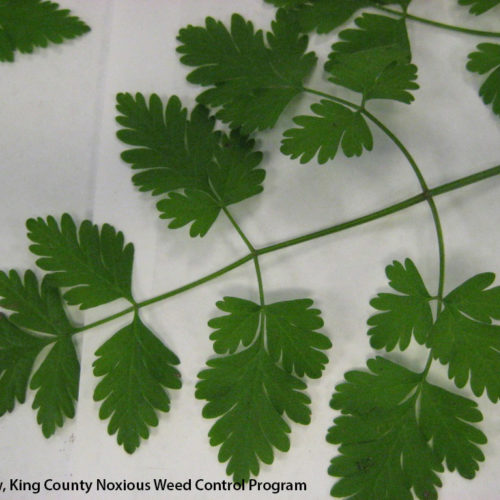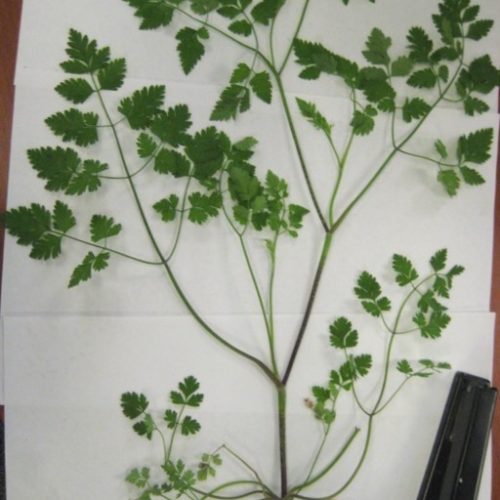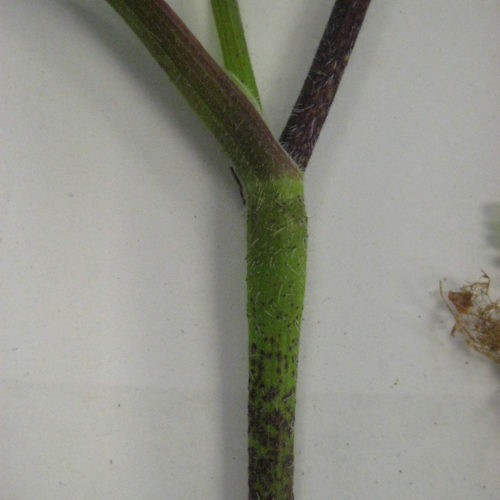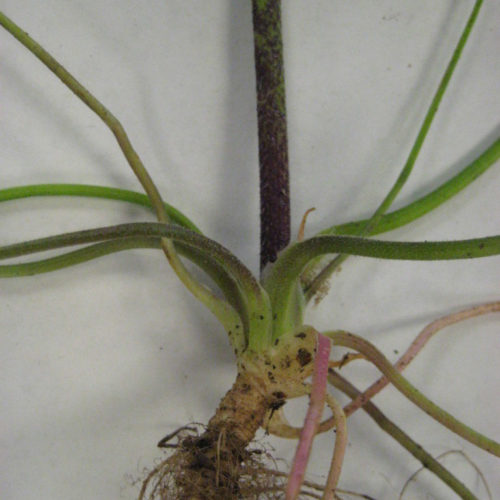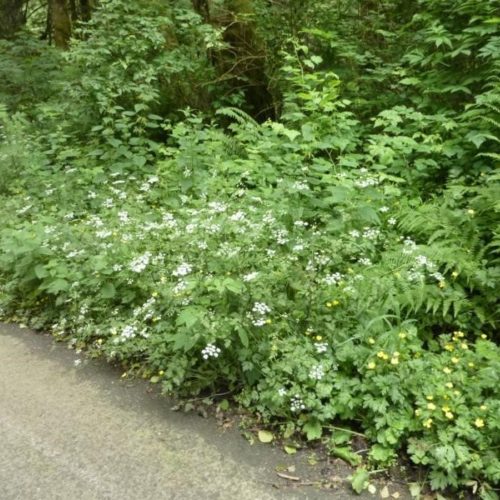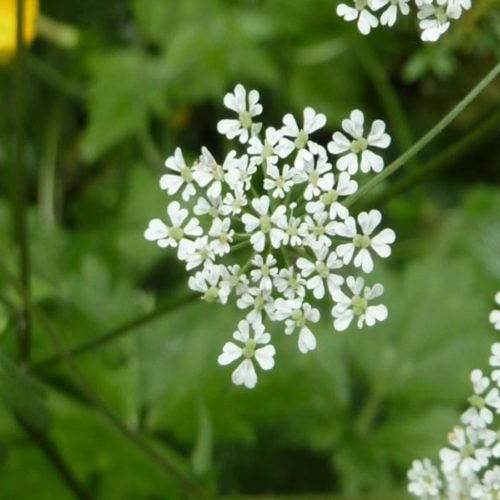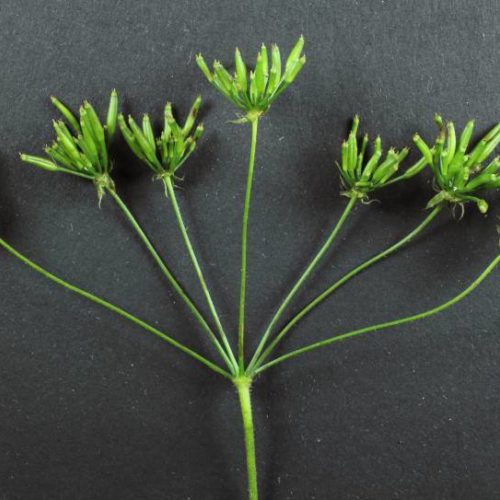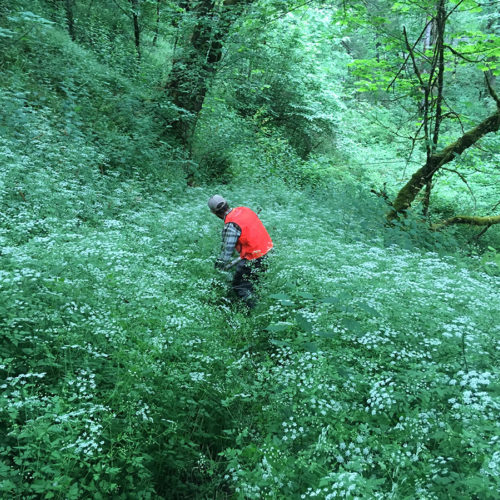Rough chervil
Chaerophyllum temulum
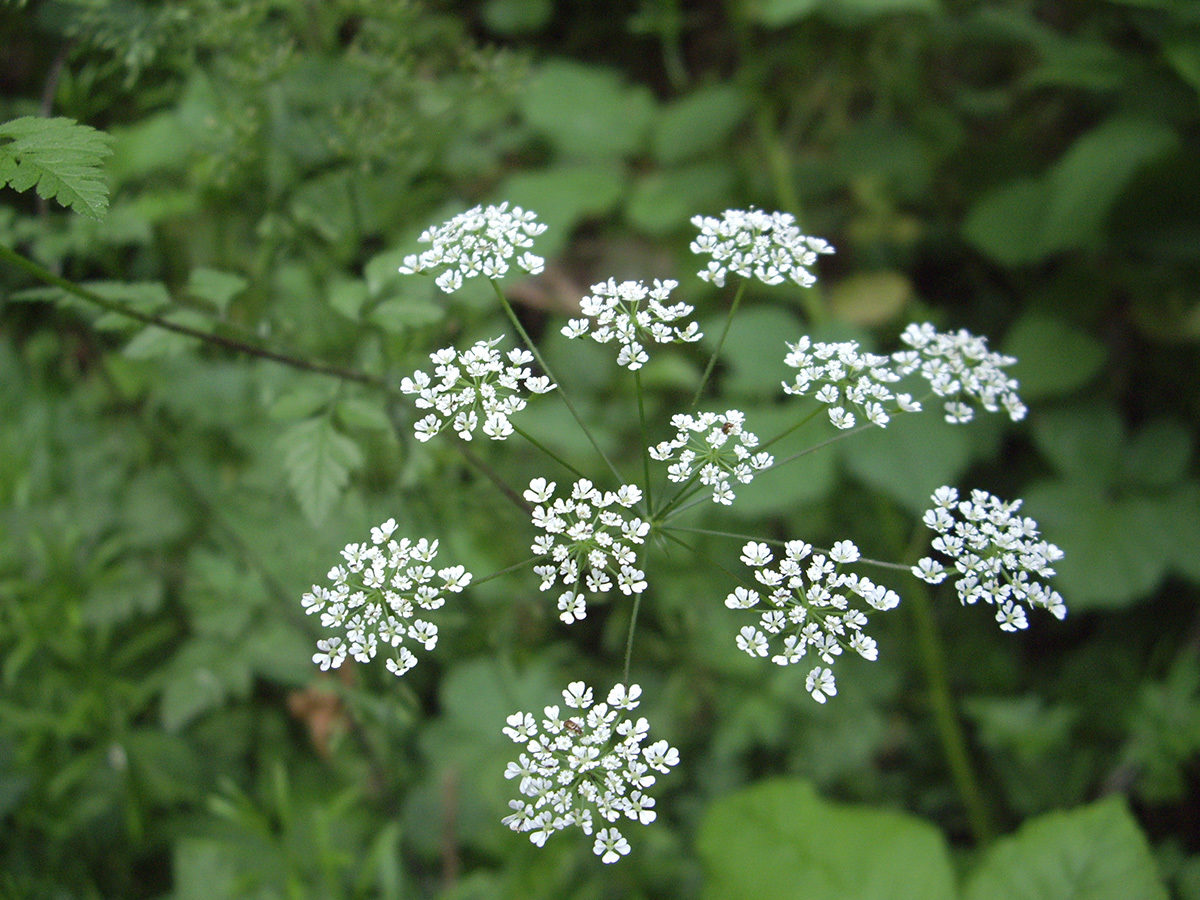
Family: Apiaceae
Other Scientific Names:
Chaerophyllum temulentum
Weed class: B
Year Listed: 2022
Native to: Europe, Asia, and North Africa
Is this Weed Toxic?:
Yes, people and animals. It is observed to be toxic to some grazing animals, including horses, cattle, and swine. Sap can cause skin irritation and rashes. Also toxic to people if consumed. See Wikipedia.org 'Toxicity' section.
Legal listings:
This plant is also on the Washington State quarantine list. It is prohibited to transport, buy, sell, offer for sale, or distribute plants or plant parts of quarantined species into or within the state of Washington or to sell, offer for sale, or distribute seed packets of seed, flower seed blends, or wildflower mixes of quarantined species into or within the state of Washington. Please see WAC 16-752 for more information on the quarantine list. For questions about the quarantine list, contact the Washington State Department of Agriculture's Plant Services Program at (360) 902-1874 or email PlantServices@agr.wa.gov.
Why Is It a Noxious Weed?
Rough chervil creates monocultures in forest areas, disrupting the ecosystem and native speices.
How would I identify it?
General Description
Rough chervil is a biennial, herbaceous plant, covered in rough hairs, grows up to ~ 3.3 feet (1 meter) tall and has clusters of white flowers.
Flower Description
Flowers in compound, somewhat open, umbels of small white flowers, petals 1-3 mm.
Leaf description
Basal leaves are 2-3 times pinnately compound and hairy on both sides. Leaf segments obtuse or abruptly contract to pointed tip. The compound leaves reduce in size up the stem and are alternately arranged.
Stem description
Stems are solid, have purple spotting or can be fully purple, and are covered in hairs that are somewhat bristly. Stems are swollen below the leaf nodes (where the leaf meet the stems).
Fruit Seed Description
Fruits 4 to 6.5 mm long that gradually taper from the middle to their tip. 4 to 6.5 mm (0.16 to 0.26 inches) long
May Be Confused With
Other members of the carrot/parsley family Apiaceae. Poison hemlock (Conium maculatum) a Class B noxious weed that is deadly toxic, is taller than rough chervil, growing 8-12 feet tall, and also has purple spotted stems but poison hemlock does not have hairs and does not have stem swelling below the leaf nodes.
Wild chervil (Anthriscus sylvestris) is a Class B noxious weed that is not known to be toxic, also grows to about 3 feet tall, but has hollow, ridged, hairy stems without purple spotting.
Wild carrot (Daucus carota) is a Class C noxious weed that grows up to about 4 feet tall, is densely hairy, does not have purple spotting, and the flowers are held in dense, flat-topped compound umbels.
Where does it grow?
Grows in disturbed understories and semi-shaded areas. In areas with moist soils part of the year. Click here to see a county-level distribution of rough chervil in Washington.
How Does it Reproduce?
Plant spread readily by seed.
How Do I Control It?
See the King County Noxious Weed Control Program's control recommendations for rough chervil.
For More Information
King County Noxious Weed Board: rough chervil identification and control
UW Herbarium Image Database information on rough chervil
Calphotos images of rough chervil
King County's report on rough chervil.



